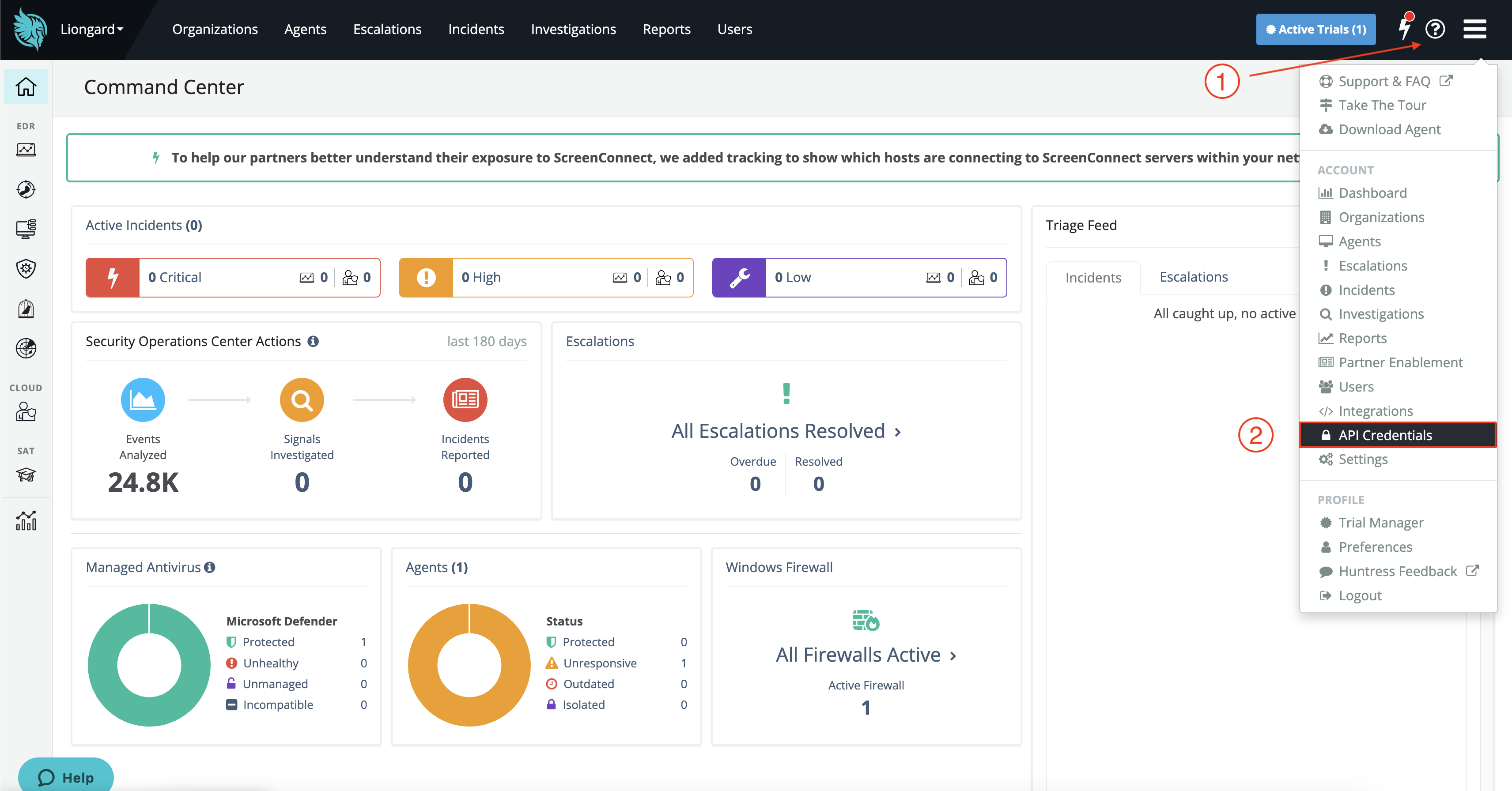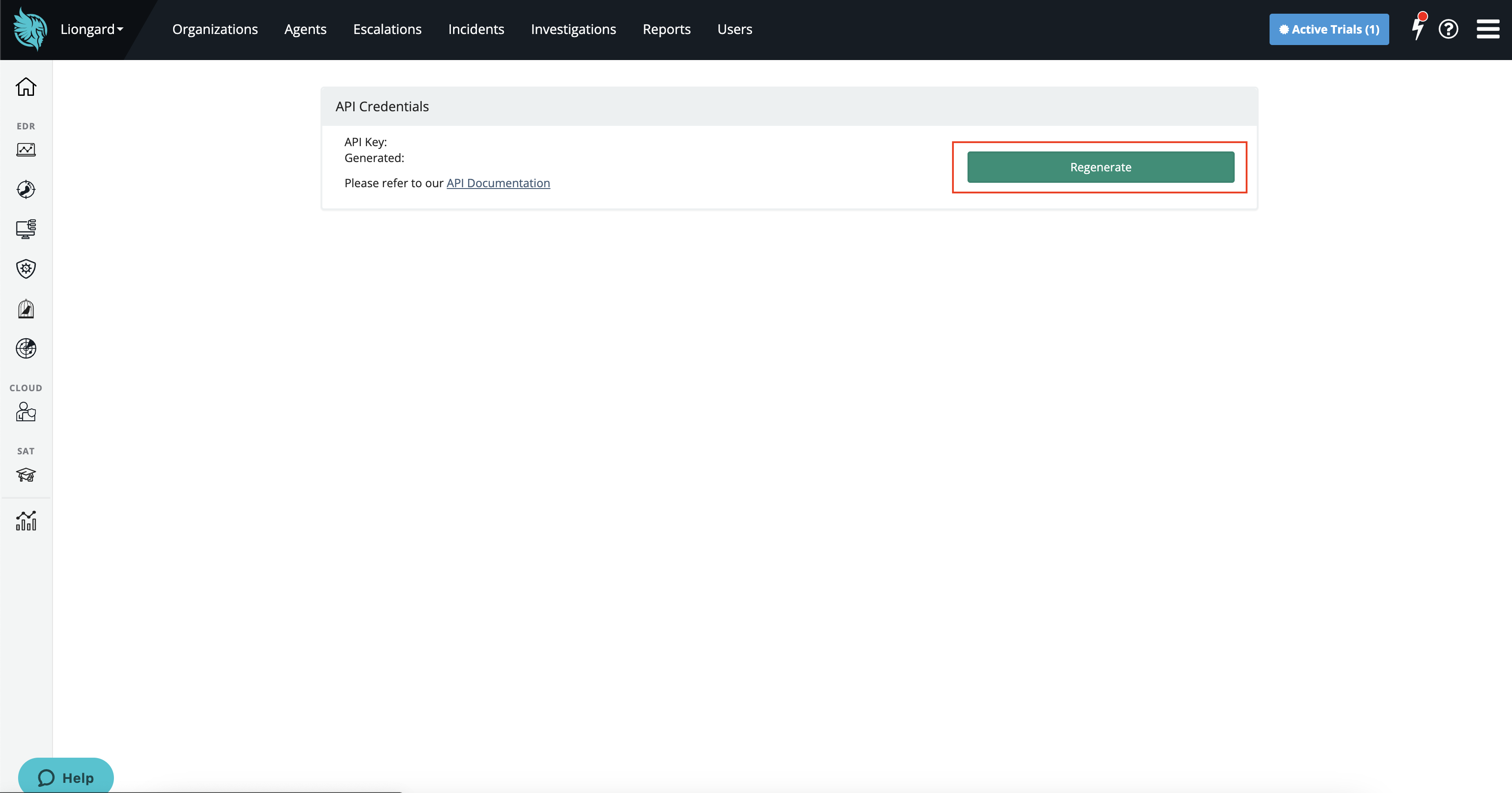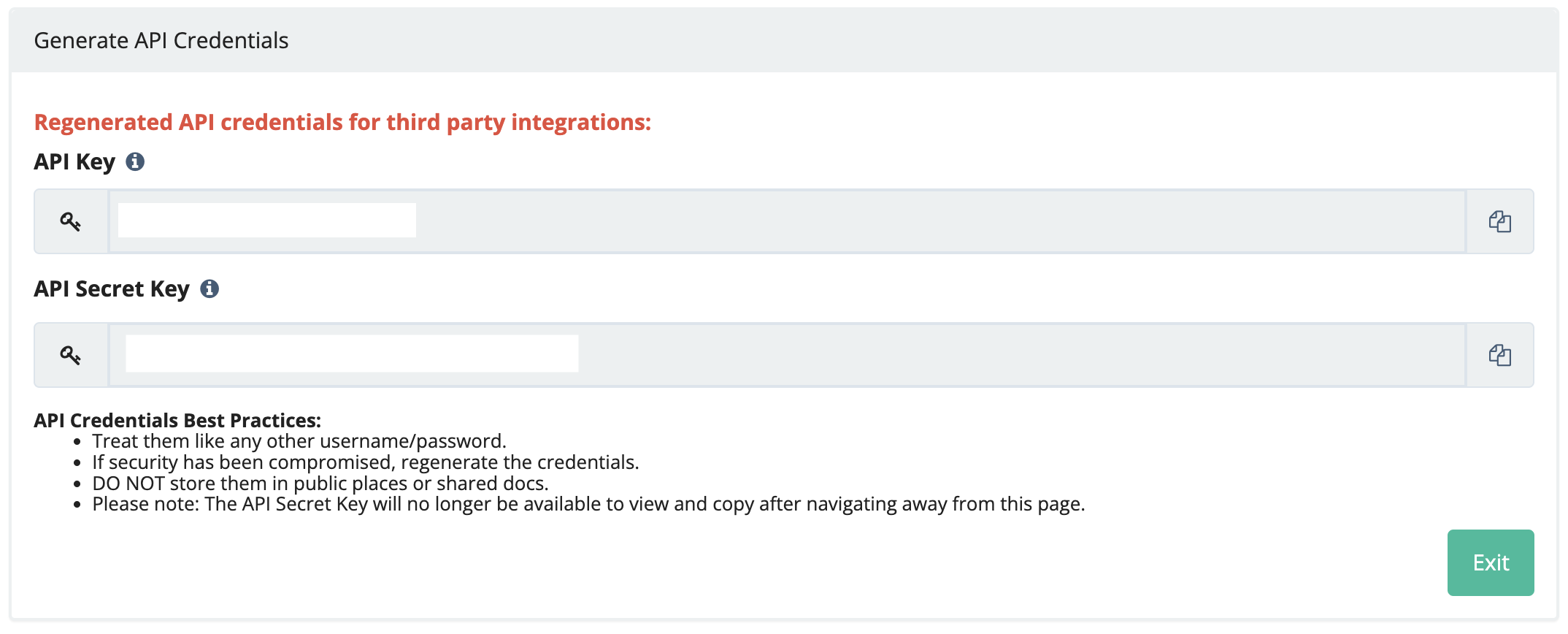Huntress
This document provides the steps required to configure the Huntress Inspector
Quick DetailsRecommended Agent: Self-Managed
Supported Agents: Self-Managed
Is Auto-Discovered By: Windows Server Inspector
Can Auto-Discover: N/A
Parent/Child Type Inspector: Yes
Inspection via: API
Data Summary: Here
Overview
Liongard's Huntress Inspector retrieves and monitors configuration data from our partners' Huntress EDR solutions. This Inspector allows you to effectively oversee the security configurations of all Huntress instances, establish a standardized security baseline across all clients, and quickly identify any deviations from this baseline.
Inspector Setup Preparation
A user is required to set up this integration. You can create a new API User or use an existing user to generate the API Credentials.
MFA is supported for API use and recommended to secure accounts properly.
Generating API Credentials
-
Once you have created or logged in with your API user, select the three-bar menu on the top right of your instance, then click API Credentials.

- After you access the API Credentials window, you may copy the API Key listed below only if you have stored its accompanying Secret Key. Otherwise, clickRegenerate in order to generate a new set of API keys. Note that clicking Regenerate will invalidate both your current API Key and API Secret Key, and will require that your applications be updated with the new set of credentials

- From here, record and save the generated API Keys that you will need to add to the inspector configuration screen

Liongard Inspector Setup
Step 1: Parent Inspector Setup
Since Huntress is a multi-tenant system with a single portal to manage many Environments, you will set up a single "Parent" Inspector with the API Key that will then auto-discover "Child" Inspectors for each Environment.
In Liongard, navigate to Admin > Inspectors > Inspector Types > Navigate to the Huntress Inspector > Select Add System.
Fill in the following information:
- Type of Inspector: Select Parent
- Environment: Select your MSP's Environment
- Friendly Name: Suggested "Huntress [Environment Name]"
- Agent: Self-Managed Agent
- Inspector Version: Latest
- Huntress API Secret: The API Key you created in the steps above
- **Huntress API Key Secret
- Scheduling: The Inspector will default to run once a day at the time the Inspector is set up. Here you can adjust the schedule
Select Save. The Inspector will now be triggered to run within the minute.
Step 2: Child Inspector Setup
After the first run of the Parent Inspector, your client Huntress organizations will be Auto-Discovered in the Discovered Systems tab on the Inspectors >Huntress page.
Navigate to the Discovered Systems tab in your Inspectors > Huntress page
- Activate or Archive your Discovered Systems by ensuring that they're mapped to the correct Environment > Check the checkbox to the left of Inspector(s) > Select the Actions drop down menu > Activate Launchpoints
Optional: Turn on Flexible Asset/Configuration Auto-Updating
If you would like this Inspector's data to be sent to ConnectWise and/or IT Glue, turn on Flexible Assets/Configurations for this Inspector:
- ConnectWise: Admin > Integrations > ConnectWise > Configuration Types > Confirm the "Configuration Auto-Updating" toggle is enabled
- IT Glue: Admin > Integrations > IT Glue > Flexible Assets > Confirm the "Flexible Asset Auto-Updating" toggle is enabled
Updated 3 months ago
